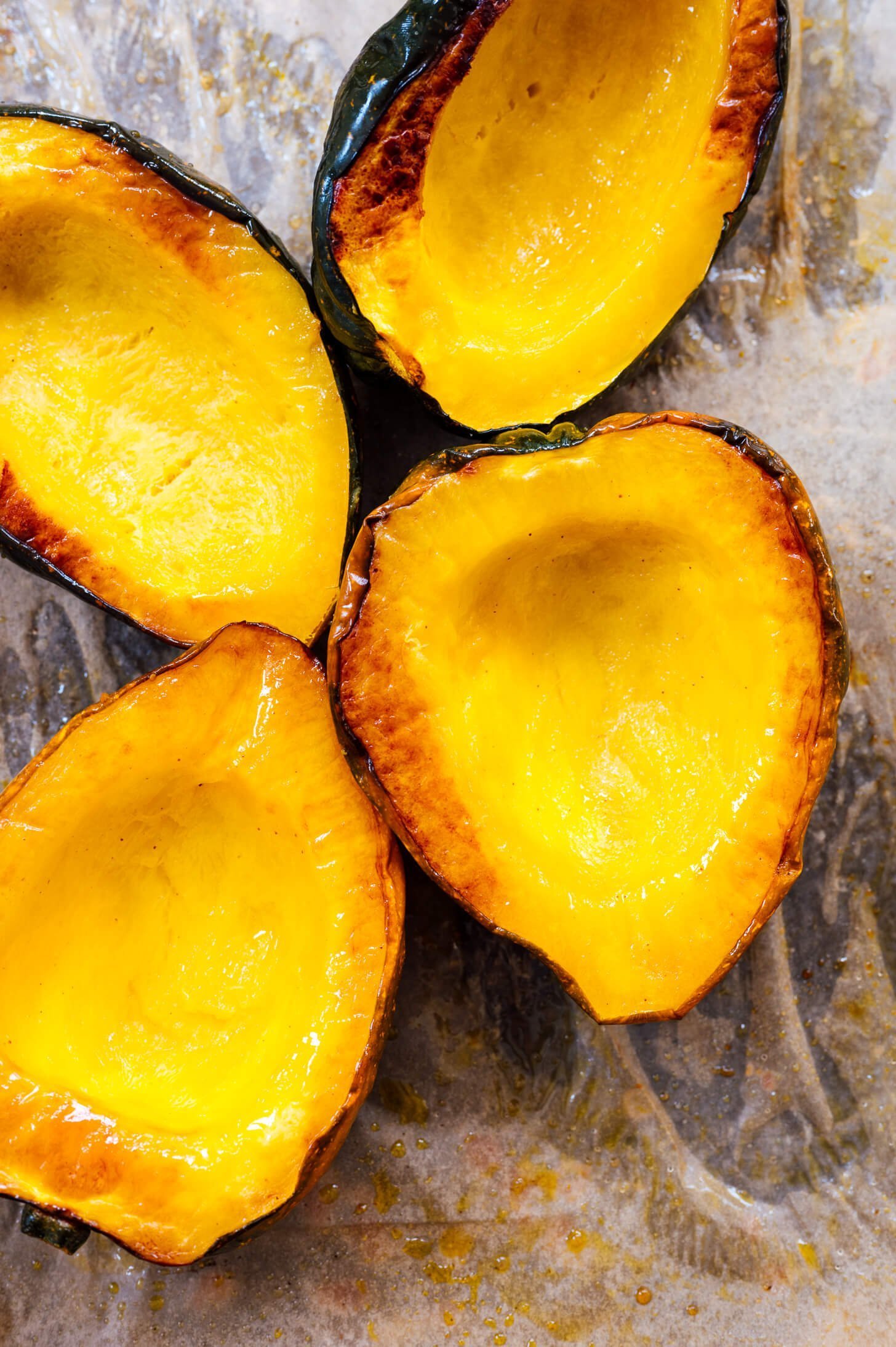Imagine walking through a bustling farmers’ market, captivated by the vibrant array of fruits and vegetables. Amongst the colorful displays, your eyes land on an intriguing vegetable: acorn squash. But what exactly does acorn squash look like? This delightful vegetable boasts a distinctive appearance, resembling its namesake, the acorn. With a dark green outer skin, flecked with patches of orange and yellow, acorn squash stands out among its counterparts. Its shape, too, is unique, resembling a small, squat and circular pumpkin. Its distinctive hues and shape make acorn squash an eye-catching addition to any culinary adventure.

What Does Acorn Squash Look Like?
Acorn squash is a beautiful and distinctive winter squash that is loved for its unique shape, vibrant color, and delicious flavor. If you’ve never seen an acorn squash before, let me give you a detailed description of its appearance.
Shape
Acorn squash gets its name from its shape, which resembles that of an acorn. It has a slightly elongated oval shape with a rounded bottom and a pointed top. The overall shape is compact and symmetrical, making it easy to recognize.
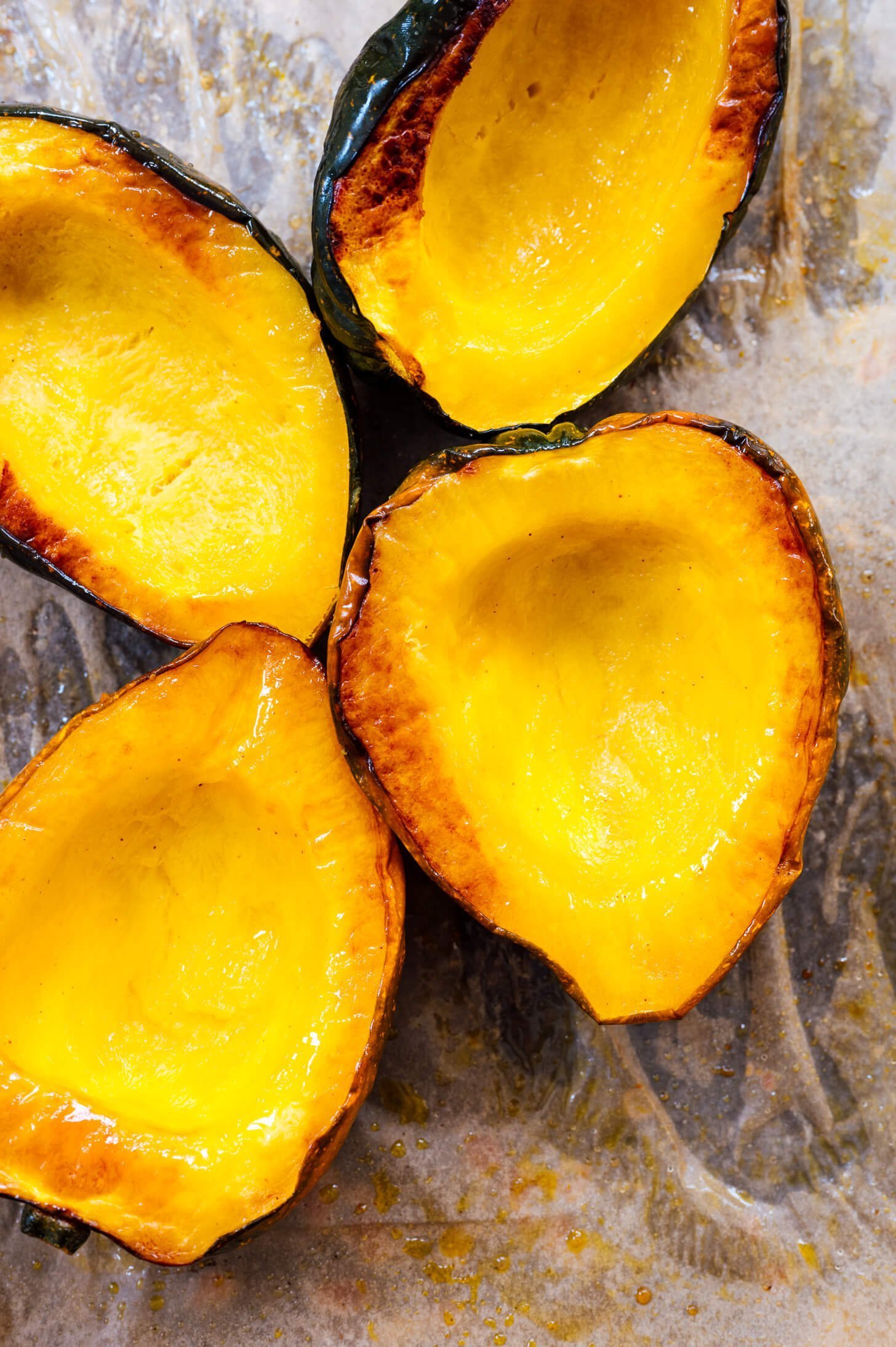
Size
In terms of size, acorn squash typically ranges from 6 to 8 inches in length. However, some can grow as large as 9 or 10 inches. It is a relatively small winter squash compared to other varieties, making it perfect for individual servings.
Color
When it comes to color, acorn squash is known for its deep green skin. The skin can vary in shades, ranging from a dark forest green to a lighter, almost grayish green. This vibrant color is one of the distinguishing features of acorn squash, and it adds to its visual appeal.
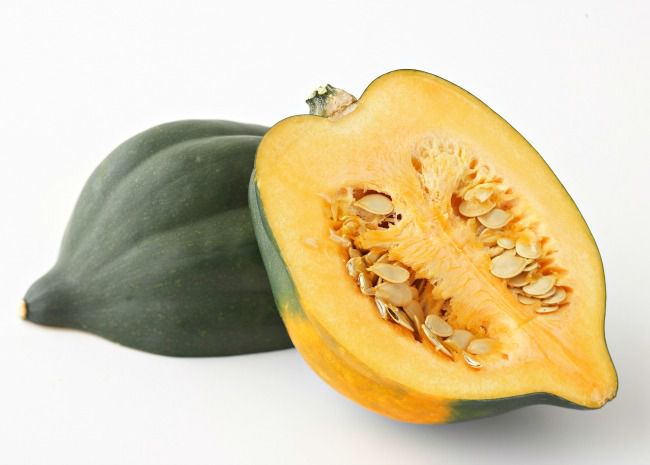
Skin
The skin of an acorn squash is quite unique. It has a tough exterior that protects the flesh inside. While the skin is not edible, it serves as a protective layer during storage and cooking. It is important to remove the skin before consuming the squash.
Ridges
One of the most notable features of acorn squash is its distinctive ribbing. The skin is adorned with deep vertical ridges that run from the top to the bottom, giving it a visually appealing texture. These ridges not only add to its appearance but also provide a guide for cutting and preparing the squash.
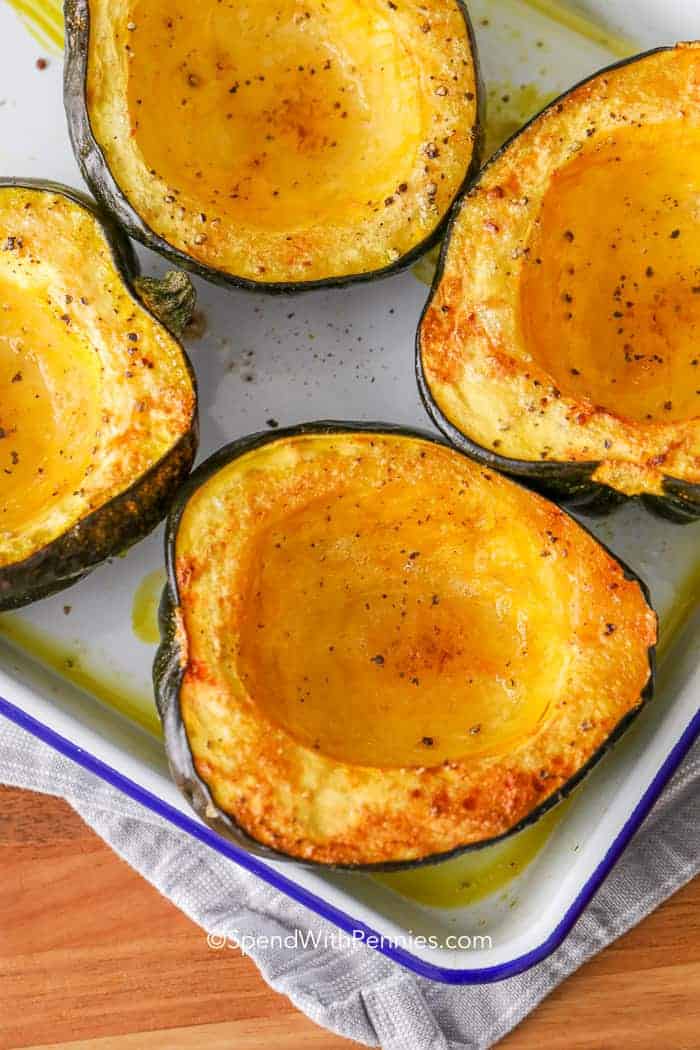
Stem
Acorn squash has a distinctive stem that is attached to the top. The stem is woody and textured, adding to the overall aesthetic appeal of the squash. It is important to remove the stem before cooking the squash, as it is too tough and inedible.
Flesh
Once you cut open an acorn squash, you’ll be greeted by its beautiful pale yellow or orange flesh. The flesh is dense and firm, offering a satisfying bite. Acorn squash has a sweet and nutty flavor, making it a delightful addition to both sweet and savory dishes.
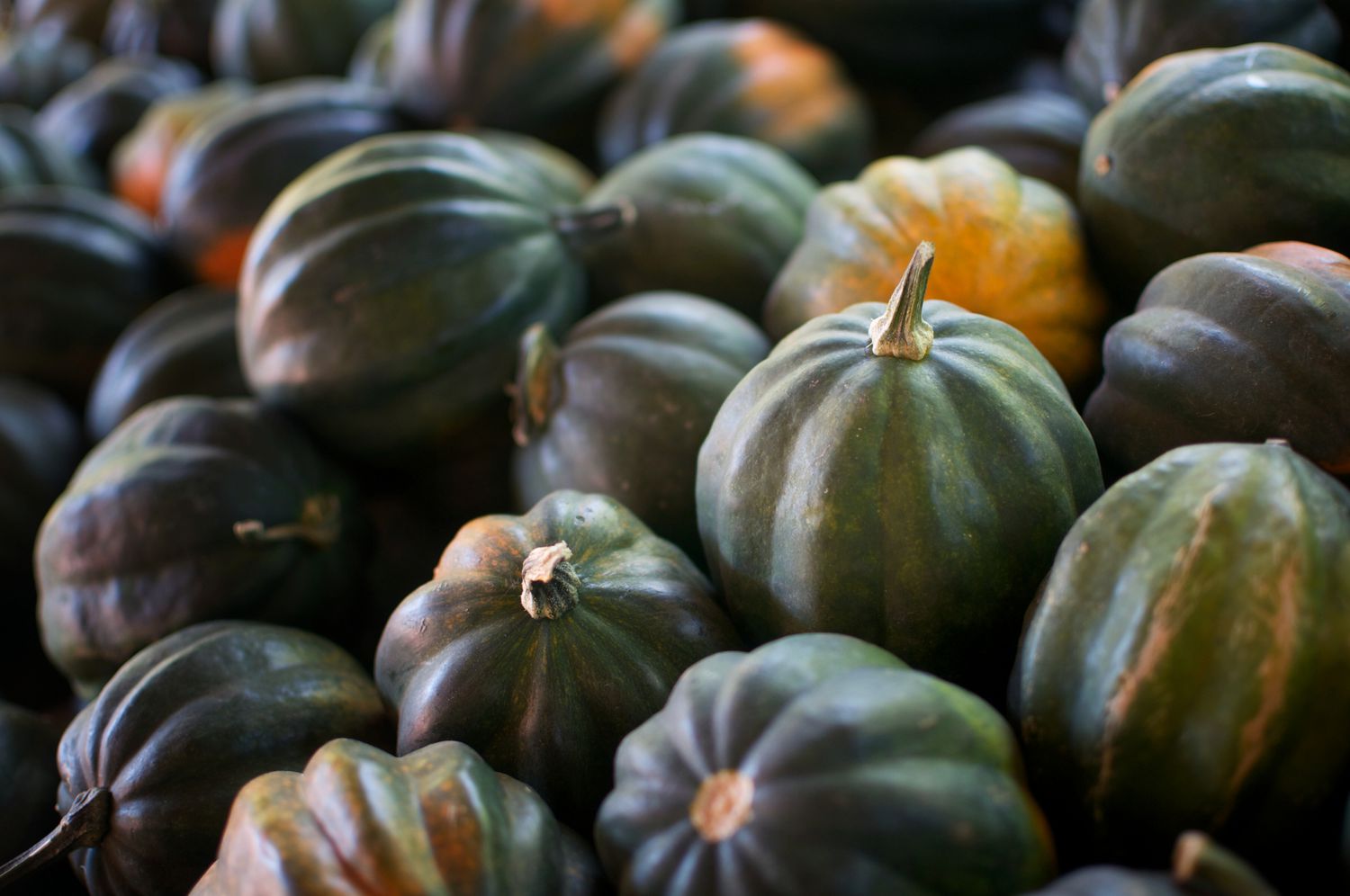
Seeds
Inside the acorn squash, you’ll find a central cavity filled with seeds. The seeds of an acorn squash are flat and cream-colored. Unlike the skin, these seeds are edible and can be roasted for a crunchy snack. They add a nice touch of texture and flavor to various dishes.
Varieties
While the traditional acorn squash has dark green skin, there are also variations in color and patterns. Some varieties have a mix of green and orange hues, while others may even have patches of yellow or white. Each variety has its own unique appearance, but they all share the same delicious taste.
Related Squash Types
Acorn squash belongs to the broader family of winter squash. Here are a few other popular winter squash types that you might come across:
1. Butternut Squash
Butternut squash is known for its elongated pear-like shape and smooth tan-colored skin. Its flesh is vibrant orange and has a creamy texture with a slightly sweet flavor. It is a beloved squash for soups and roasted dishes.
2. Spaghetti Squash
Spaghetti squash is named after its unique ability to form spaghetti-like strands when cooked. It has a yellow or pale orange skin and a mild flavor. The strands of cooked spaghetti squash can be used as a low-carb substitute for pasta.
3. Delicata Squash
Delicata squash is a smaller winter squash with a cylindrical shape and creamy yellow or orange skin with green stripes. It has a sweet and nutty flavor and its skin is edible, adding a nice contrast of texture to dishes.
4. Kabocha Squash
Kabocha squash is a Japanese variety that has a round shape and a dense, sweet flesh. Its skin can range from deep green to a mottled orange or even a vibrant red. It is often used in stews, soups, and tempura.
So, the next time you come across an acorn squash, you’ll be able to recognize it by its distinct shape, deep green color, and beautiful ridges. With its sweet and nutty flavor, acorn squash is a versatile winter vegetable that can be used in a variety of delicious recipes. Give it a try and discover the joy of cooking with this delightful squash!
